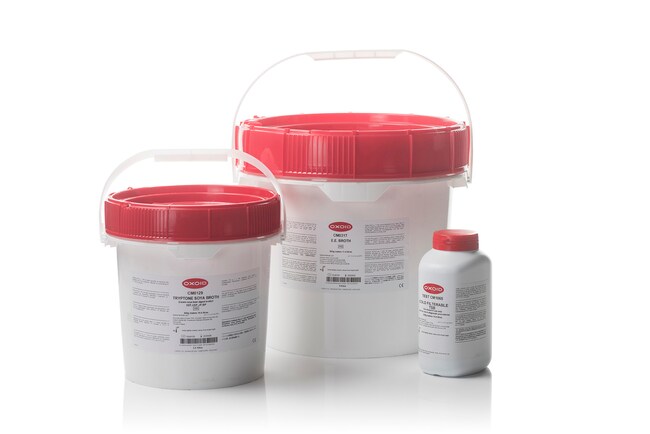Search Thermo Fisher Scientific
- Contact Us
- Quick Order
-
Don't have an account ? Create Account
Search Thermo Fisher Scientific

Isolate Campylobacter jejuni, Campylobacter coli and Campylobacter laridis using Thermo Scientific™ Oxoid™ Campylobacter Blood-Free Selective Agar Base (Dehydrated) when used with CCDA Selective Supplement SR0155. Campylobacter Blood-Free Selective Agar Base is based on the original formulation described by Bolton et.al1 which was developed to replace blood with charcoal, ferrous sulphate and sodium pyruvate. For improved selectivity cephazolin in the formulation was replaced by cefoperazone as a selective agent2.
| Description | Campylobacter Blood-Free Selective Agar Base |
| Form | Powder |
| Product Type | Agar |
| Quantity | 500 g |
| Yield | For 11.0L medium |
| Unit Size | Each |
| Catalog Number | Specifications | Unit Size | Quantity | Price (ARS) | |||||||||||||||||||||||||||||||||||||||||||||||||||||||||||||||||||||||||||||||||||||||||||||||||||||||||||
|---|---|---|---|---|---|---|---|---|---|---|---|---|---|---|---|---|---|---|---|---|---|---|---|---|---|---|---|---|---|---|---|---|---|---|---|---|---|---|---|---|---|---|---|---|---|---|---|---|---|---|---|---|---|---|---|---|---|---|---|---|---|---|---|---|---|---|---|---|---|---|---|---|---|---|---|---|---|---|---|---|---|---|---|---|---|---|---|---|---|---|---|---|---|---|---|---|---|---|---|---|---|---|---|---|---|---|---|---|---|---|---|
| CM0739B | Each | 500 g | Contact Us › | ||||||||||||||||||||||||||||||||||||||||||||||||||||||||||||||||||||||||||||||||||||||||||||||||||||||||||||
| |||||||||||||||||||||||||||||||||||||||||||||||||||||||||||||||||||||||||||||||||||||||||||||||||||||||||||||||
Campylobacter are Gram-negative, spirally shaped microaerophilic organisms which may be present in raw milk, untreated water, improperly handled food and undercooked meats, poultry and shellfish. Human consumption of these organisms can result in a range of clinical illnesses from transient asymptomatic colonisation to severe dysentery. The symptoms of Campylobacter enteritis include diarrhoea, stomach pain, nausea, fever, headache and muscle pain.
Use Campylobacter Blood-Free Selective Agar Base for isolation of Campylobacter species.
The colonial morphology of campylobacters can be used as a guideline for identification to species level. Campylobacter jejuni strains produce grey, moist flat spreading colonies. Some strains may have a green hue or a dry appearance, with or without a metallic sheen. Campylobacter coli strains tend to be creamy-grey in colour, moist, slightly raised and often produce discrete colonies.
Not all products are available for sale in all territories. Please inquire.
Remel™ and Oxoid™ products are now part of the Thermo Scientific brand
General References: